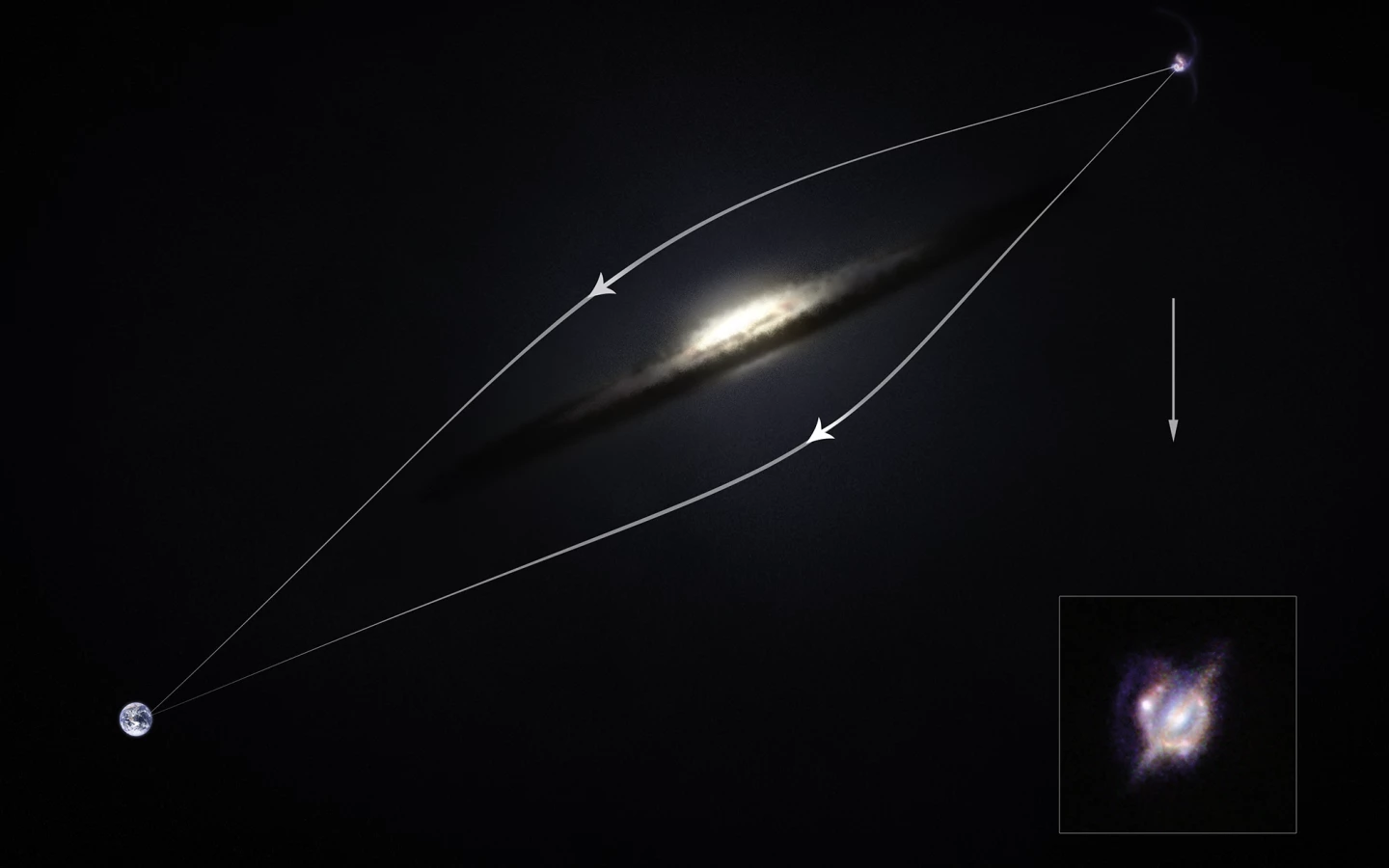An international team of astronomers has used a range of telescopes including the Atacama Large Millimeter/submillimeter Array (ALMA) to observe a pair of galaxies colliding at a time when the universe was just half its current age. The project made use of a gravitational magnifying glass created by the gravity of a galaxy between Earth and the subject, and required observations in both visible and infrared light.
The galaxies, known collectively as H-ATLAS J142935.3-002836 (H1429-0028 for short), were originally discovered in the Herschel Astrophysical Terahertz Large Area Survey (H-ATLAS). The system is obscured by a closer galaxy in the foreground, and was found to be extremely faint when viewed in visible light, but appeared much brighter in far-infrared observations.
While the closer, obscuring galaxy created obvious difficulties in directly observing the distant object, the team was able to make use of an effect known as gravitational lensing, wherein a cosmic lens is created by the gravity of a foreground galaxy. This lens deflects the light being emitted from the obscured object, allowing astronomers to study it in detail.

Knowing that this was possible, a campaign of observations were embarked upon, utilising both space and ground telescopes. NASA/ESA’s Hubble Space Telescope and the Keck Observatory were used to reveal the gravitationally-induced ring of light around the obscuring galaxy, helping to gather details about its nature.
The team then used ALMA and the Karl Jansky Very Large Array (JVLA) to study the area at longer wavelengths, penetrating the intervening clouds of dust. Together, these observations revealed that the obscured system was in fact two galaxies in the process of colliding, the light of which has taken so long reach Earth that, according to astronomers at the European Southern Observatory, the witnessed events actually took place when the universe was around half its current age.
ALMA was particularly useful in identifying the nature of the objects, tracing carbon monoxide to gather information about star formation in the distant galaxies. The telescope’s observations revealed the movement of material in the objects, showing them two be two galaxies, one of which was found to be a disc galaxy, in the process of colliding.
The nature of the colliding galaxies was found to be similar to a much closer object known as the Antennae Galaxies. Though these colliding galaxies are much closer to Earth than H1429-0028, at the time of observation, the more distant object was producing significantly more stars. The distant galaxies annually turn out in excess of 400 times the mass of our Sun of gas into new stars, while the Antennae Galaxies only produce stars equal to one-tenth of the mass of the Sun each year.
Source: ESO





